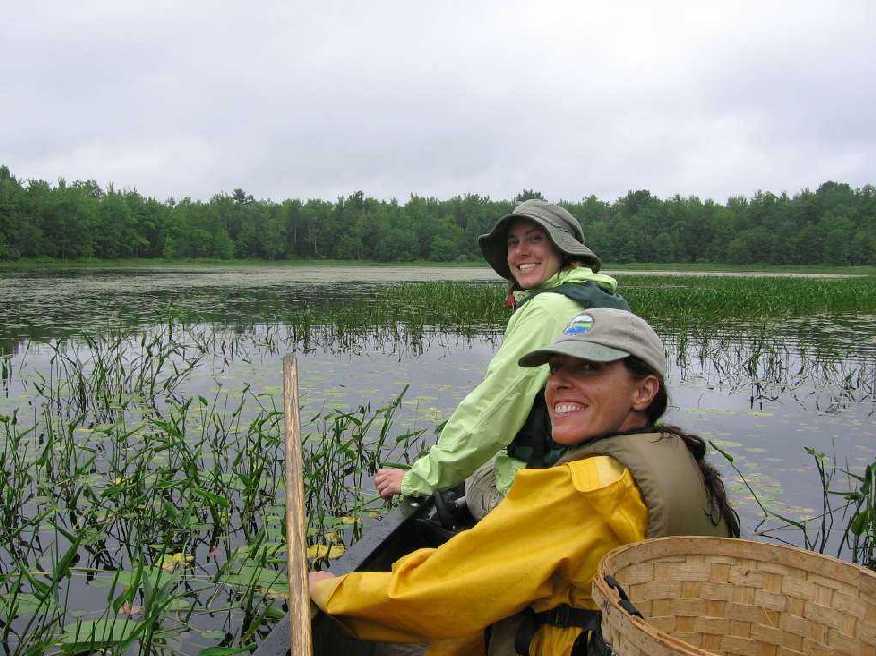Home → Water Quality → Monitoring & Assessment > Biomonitoring > Sampling & Analysis > Wetland Macroinvertebrate Sampling
 Macroinvertebrate Sampling in Wetlands
Macroinvertebrate Sampling in Wetlands
Site locations & rationale
The Biological Monitoring Program has established a widely distributed set of monitoring sites in freshwater wetlands since wetland monitoring began in 1998. Sampling occurs during June and early July. Wetland sampling sites are chosen to represent a gradient of human disturbance. Site conditions range from reference sites nearly unaffected by human activity to severely degraded sites. Reference wetlands are chosen to include a range of wetland types and geographic regions. Macroinvertebrate samples in human-impacted wetlands are compared to those from reference wetlands of similar type to assess the degree of degradation occuring at impacted sites.
Sampling methods
Macroinvertebrate samples are taken from areas of emergent vegetation using a measured sweep with a standard D-frame dip net. A sample is collected by submerging the net and sweeping through the water for a distance of one meter. The net is bumped against the bottom substrate three times (at the beginning, middle, and end of the sweep) to dislodge and collect organisms from the sediment and water column. All material collected is placed in a sieve bucket. Large pieces of vegetation are washed and discarded, while finer plant material and detritus are retained. Three replicate samples are collected. These samples are preserved for later sorting and taxonomic analysis in the laboratory.
Physical and chemical water quality data collected through field measurements and analysis of water samples at each site include temperature, water depth, dissolved oxygen, conductivity, pH, nutrients, chlorophyll a, anions and cations, dissolved organic carbon, color, and alkalinity.
Habitat descriptions are recorded. These include a Cowardin classification (a standard system of wetland classification used by wetland biologists) and a qualitative listing of the dominant plant species at the site.
Human activities at the site and in the surrounding area are also noted and scored. The effects of human activity that are noted include hydrologic and vegetation modifications, evidence of chemical pollutants, impervious surfaces in the watershed, and other potential non-point sources of pollution.
Data analysis
Water quality, habitat, and human activity data are used to characterize the wetland type, determine relative levels of human disturbance in comparison to other sites, identify sources and causes of degradation, and verify that reference sites are indeed minimally impacted by human activity.
Biological monitoring results are analyzed on an ongoing basis to identify and refine biological metrics used to evaluate wetland condition. Analyses performed to date show significant relationships between a number of candidate invertebrate metrics and watershed development. Many invertebrate variables tested respond to changes in water quality typically associated with urban non-point source pollution, including elevated conductivity and concentrations of dissolved ions and nutrients.
The Biological Monitoring Program is developing wetland-specific biological criteria for wetland macroinvertebrates based on tiered aquatic life uses. Tiered criteria will allow the DEP to assess incremental levels of biological impairment and improve wetland management.
For more information on how the Biological Monitoring Program samples macroinvertebrates from wetlands, please visit our Materials Page.